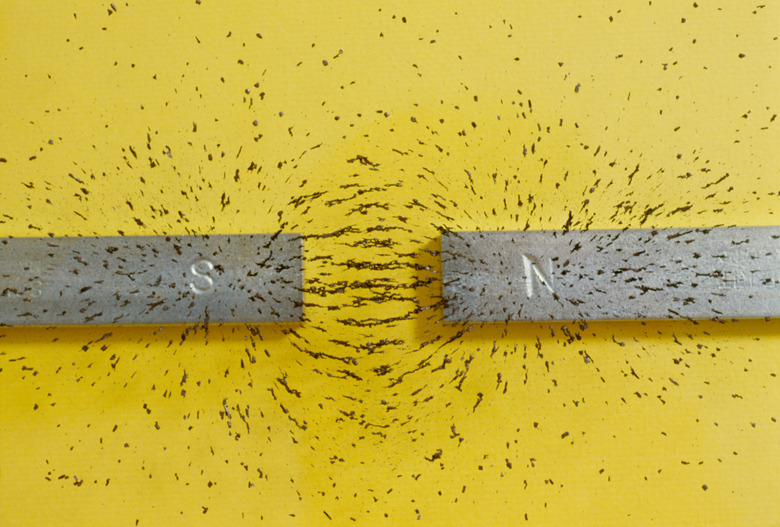How To Use A Magnet To Create Electricity
That magnets can create electricity was discovered accidentally by Hans Christian Oersted in 1819 while giving a lecture. Waving a magnet past a circuit, he made an ammeter twitch. By 1831, Englishman Michael Faraday and American Joseph Henry independently had formalized the theory for this "induction" of a current. Specifically, because the wires cut the magnetic field lines while the magnet is moving, a quantifiable electromagnetic force arises in the wire–pushing electrons and thus making a current.
Step 1
Attach the ends of one of the two wires to the two contacts of an ammeter.
Step 2
Wave a magnet over the wire. The ammeter should register both positive and negative current as you wave it back and forth.
Step 3
Make the circuit a little more complex–a little more like an AC generator–by attaching the two wires to the two ammeter contacts, and attaching the available ends of the wires to the opposite ends of a metal coil. Use a coil that is larger than the magnet, so the magnet can fit inside.
Step 4
Insert the (rodlike) magnet into the coil and take it back out again. As you do this repeatedly, the ammeter needle should bounce back and forth, again registering current in a positive and negative direction.
Things Needed
- Two wires
- Metal coil
- Magnet (rod-like is preferable)
- Ammeter
TL;DR (Too Long; Didn't Read)
Note that the motion of the magnet with respect to the coil is the rudiment of an alternating current generator, which converts mechanical energy (magnet motion) into electrical energy (electric current). An energy source could propel the magnet in cyclic motion like a piston.
References
- Fundamentals of Physics; David Halliday and Robert Resnick; 1991
- Alchemical.org: Induction's Accidental Discovery During Lecture
Cite This Article
MLA
Dohrman, Paul. "How To Use A Magnet To Create Electricity" sciencing.com, https://www.sciencing.com/use-magnet-create-electricity-5882494/. 24 April 2017.
APA
Dohrman, Paul. (2017, April 24). How To Use A Magnet To Create Electricity. sciencing.com. Retrieved from https://www.sciencing.com/use-magnet-create-electricity-5882494/
Chicago
Dohrman, Paul. How To Use A Magnet To Create Electricity last modified March 24, 2022. https://www.sciencing.com/use-magnet-create-electricity-5882494/
